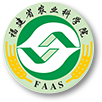Abstract:
Biological properties of
Pestalotiopsis theae Steyaert werecharacterized by means of colony growth and spore production to aid the studyon control of the ring spot disease on tea plants. The indoor experimentsshowed significant effects of light, temperature, humidity, nutrition, and pHon the growth of spores and hyphae of the pathogen. The hyphae could grow undervaried light conditions, and the spore production maxed under full lightexposure. The mycelium could develop in the range of 22-30℃andoptimally at 25-28℃, while the maximum spore generation occurred at 28℃butceased completely when temperature rose to 32℃. At pH 4.5-8, the conidiagerminated with normal germ tube elongation. The optimum pH for the pathogengrowth was 6.0, and for the peak spore production, pH 7. PDA was the mostsuitable culture medium for
P. theae Steyaert. The mycelia grew bestwhen sucrose was the carbon source and propagated most rapidly when ammoniumdihydrogen phosphate was the nitrogen source.




 下载:
下载: